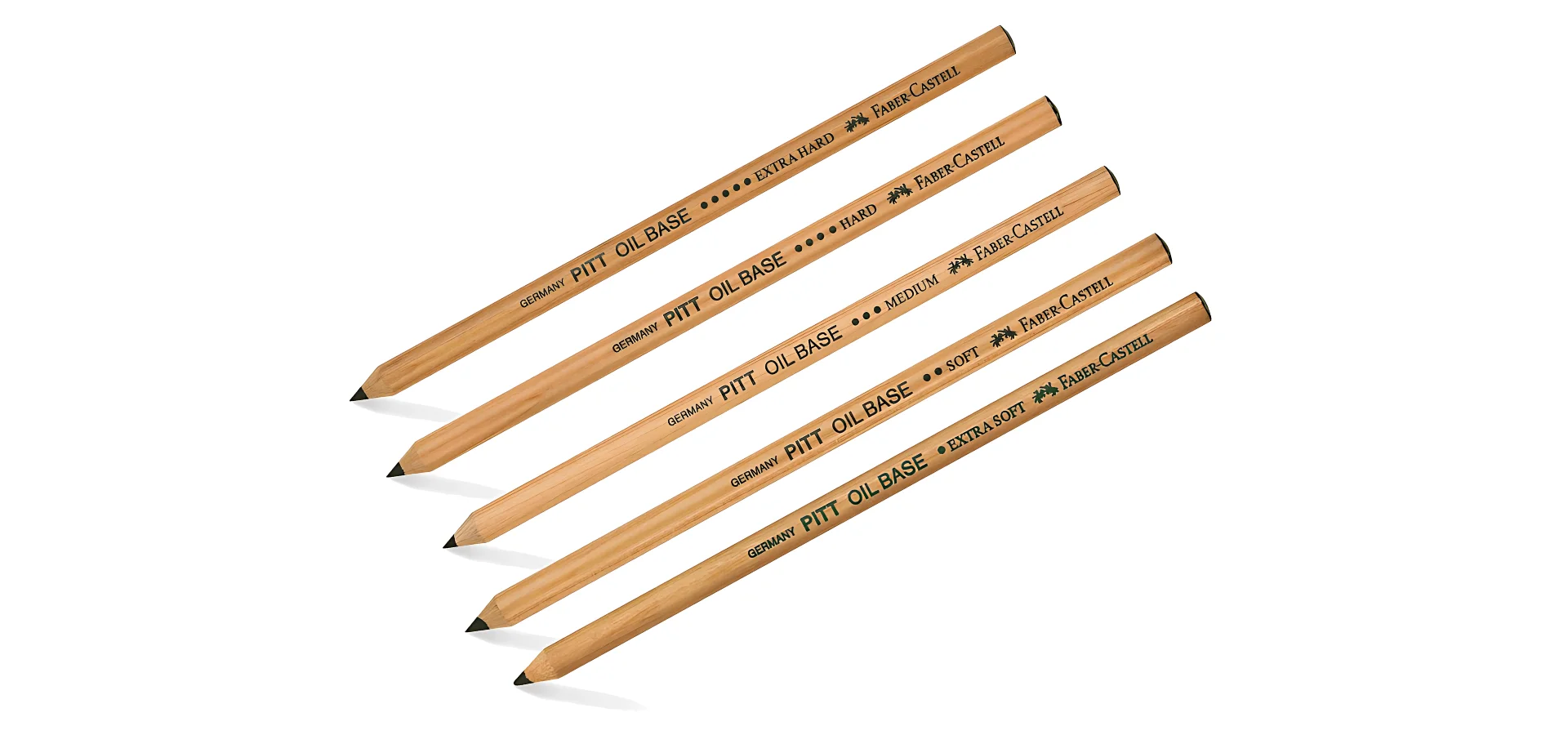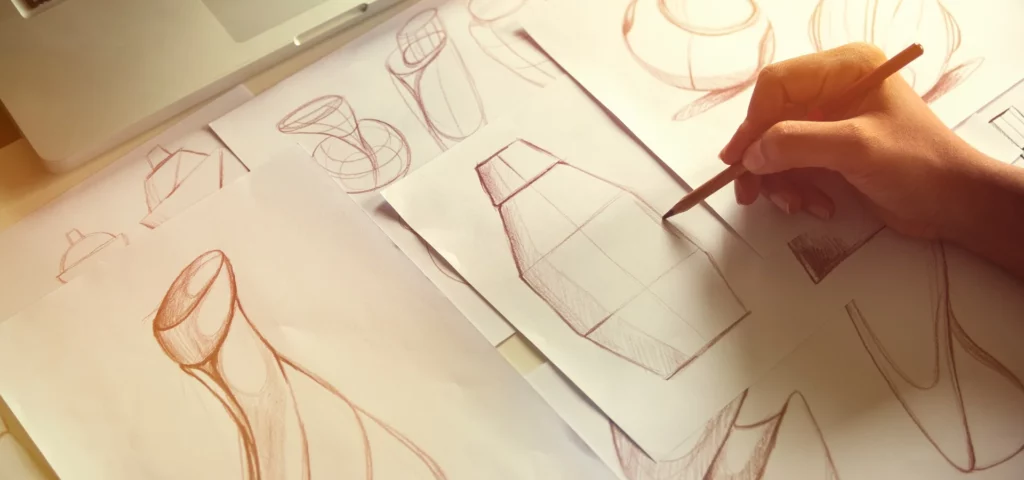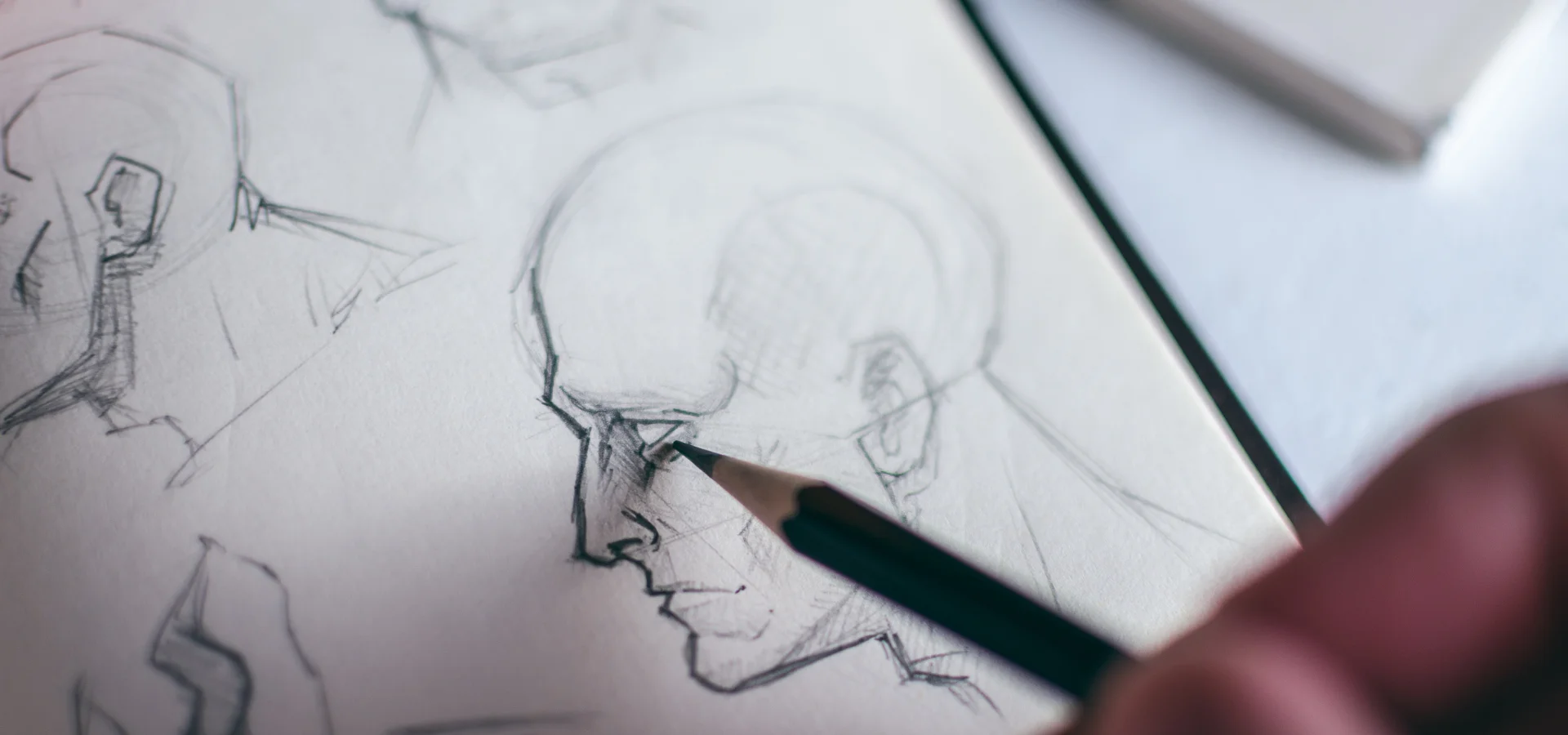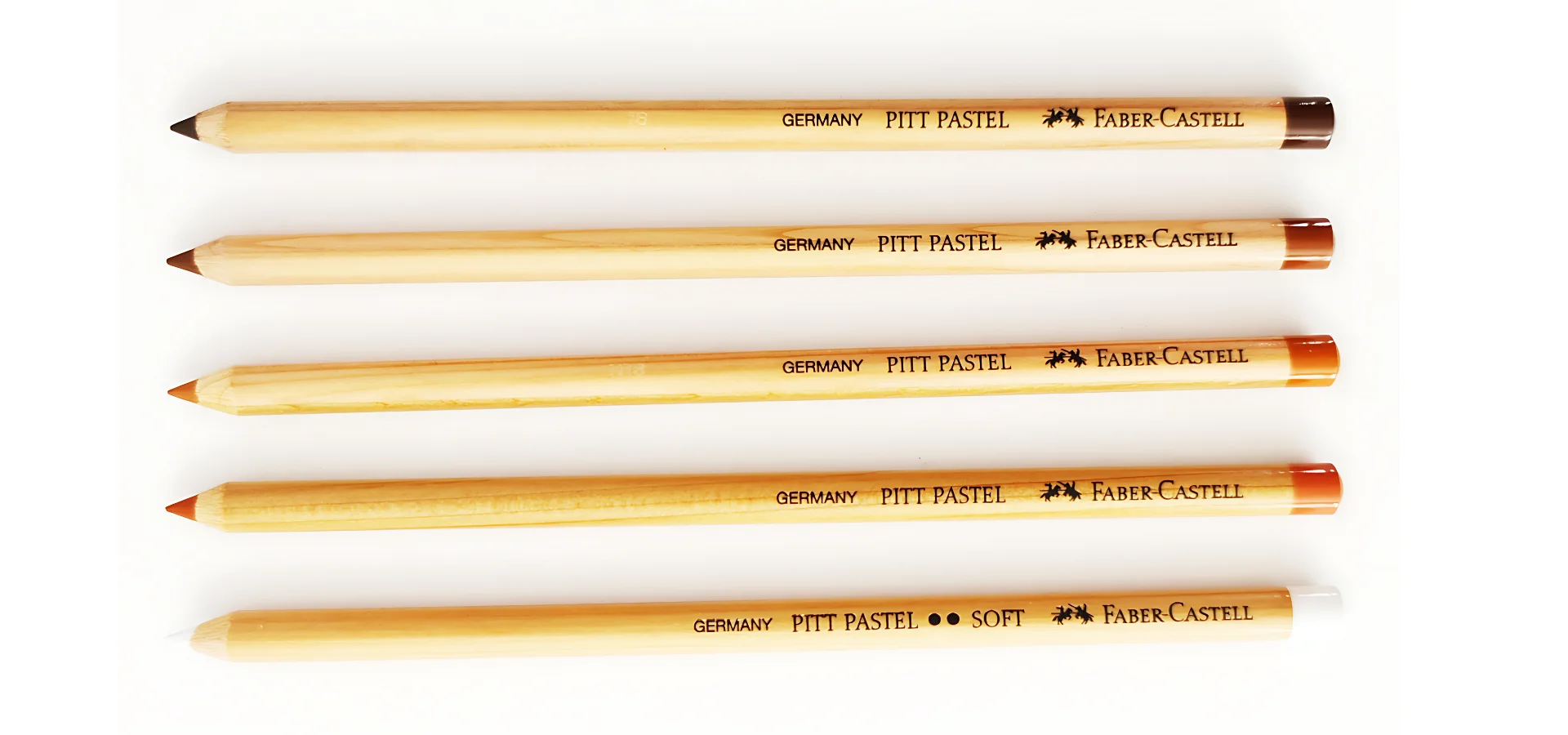
Faber-Castell Pitt Oil Pencils Overview
Introduction to Faber-Castell Pitt Pencils
Are your sketches as dull as a rainy Monday morning? Say goodbye to lacklustre lines with Faber-Castell Pitt oil-based pencils! These marvellous tools are a staple in the art world, perfect for artists who crave precision and vibrant hues.
Faber-Castell has a rich history of delivering high-quality art supplies. Their Pitt line of pencils is no exception. With options ranging from oil-based to oil-free, they’ve got all your sketching needs covered. Supplement your work with their traditional sanguine and sepia crayons, harking back to the Renaissance. Whether you’re a seasoned artist or a beginner, these pencils will add finesse to your art.
Benefits of Oil-Based Pencils
Why choose oil-based pencils? Here are a few reasons:
- Pigment Quality: Faber-Castell Pitt oil-based pencils boast rich, vibrant pigments. They ensure that each stroke is bold and eye-catching.
- Blending Abilities: The oil base allows for seamless blending. Build up layers without losing clarity, and mix colours to create stunning effects. Artists using the Polychromos Pencils can achieve brilliant, rich colors and elegant blending effects.
- Durability: Oil-based pencils are known for their durability. The pigments are more resistant to breaking, providing a longer lifespan and greater value for your investment.
- Smudge-Proof: The hard quality of Faber-Castell Pitt pencils means your lines remain intact. Your meticulous details won’t disappear into a smudged mess (My Art Shop).
- Water Resistant: Great for mixed media applications. Combine with watercolours or other mediums without ruining your work.
Faber-Castell Pitt Monochrome Range
The Faber-Castell Pitt Monochrome Range offers a variety of oil-based and oil-free drawing pencils that complement their well-known sanguine and sepia crayons. Let’s explore the benefits of these classy art tools.
Sanguine and Sepia Crayon Complement
Ah, the timeless charm of sanguine and sepia! These colors have been around since the Renaissance, ideal for figure drawing and classical sketches (My Art Shop). Faber-Castell’s Pitt Monochrome Range brings these hues to life with a blend of oil-free and oil-based pencils, perfect for both finer details and broader strokes.
The oil-based pencils in the range offer a solid backbone for artists, ensuring that lines remain intact even when smudged—a common pitfall with softer pastel crayons. They provide a subtle matte finish that art lovers adore, especially for those realistic skin tones and shadow effects. More on blending techniques? Don’t miss mixed media possibilities for tips on how to combine these pencils with other art supplies.
Sketching with Pitt Oil Pencils
Sketching with Pitt Oil Pencils is nothing short of a delightful experience. These pencils lay down thin, yet vivid colors, ensuring that every stroke counts.
| Attribute | Details |
|---|---|
| Blending Ability | Blends well with skin tones and other pastel mediums |
| Pigment Quality | Offers beautiful, strong pigments |
| Usage | Ideal for sketches needing fine details and subtle shades |
Furthermore, Faber-Castell’s Pitt Oil Pencils blend effortlessly with their Albrecht Durer Watercolor Pencils, Pitt Pens, and Castell 9000 Pencils. This versatility allows creative minds to experiment and mix mediums.
For artists who appreciate a bit of historical charm combined with modern flair, the Pitt Monochrome Range by Faber-Castell is more than just a tool—it’s a muse. Whether you’re recreating the Mona Lisa or doodling a snazzy self-portrait, these pencils are your trusty sidekicks.
Faber-Castell Pitt Oil Pencil Variations
When it comes to diving into the world of Faber-Castell Pitt oil-based pencils, understanding the available varieties is essential. Let’s explore the different versions and their unique features that can add extra zest to your artwork.
Available Varieties
Faber-Castell Pitt oil-based pencils come in several mouth-watering flavours – no, wait, we mean professional varieties. Currently, there are three main variations you can get your eager hands on:
| Variation | Description |
|---|---|
| Soft Black | Perfect for creating deep, rich lines and shadows. |
| Sanguine | Ideal for warm, reddish-brown tones in your sketches. |
| Sepia | Great for earthy, brown tones, perfect for natural and historical themes. |
While artistic tastes certainly vary, it’s clear that these pencils cater to diverse creative needs, making them the crème de la crème of the drawing world.
Features and Characteristics
Faber-Castell Pitt oil-based pencils are designed to make your artistic journey smoother and more vibrant. Here are some striking features and characteristics that set them apart from the average Joe pencil:
- Hard as Nails (but Friendlier): These pencils are tougher than conventional pastels, making them the perfect companions for fine details and vibrant contours (My Art Shop). This means your precious lines won’t vanish into thin air when smudged.
- Pigment Packed: These oil-based wonders are loaded with pigment, providing you with rich, vibrant colours that stand out on the page (My Art Shop).
- Smooth Operator: The extra soft texture ensures a smooth application, making it a breeze to create those silky transitions and seamless blendings.
- Smudge-Proof and Water-Resistant: A practical feature that gets two thumbs up during messy creative outbursts, ensuring your artwork stays intact.
- Durable Design: Customers rave about the robustness of these pencils. They hold up well under drawing pressure and sharpen like a dream without crumbling. Not only do they survive artistic tantrums, but they also maintain their structure.
These unique qualities make Faber-Castell Pitt oil-based pencils the go-to option for adding a splash of creativity to your artistic endeavours. Whether you’re after silhouettes with finely etched details or looking to blend colours seamlessly, these pencils are companions you can rely on. Happy sketching!

Customer Reviews and Feedback
Durability and Pigment Quality
When it comes to durability, Faber-Castell Pitt oil-based pencils have received rave reviews from customers. Artists highlight that these pencils feel sturdier than other brands and can withstand significant drawing pressure without breaking. Rich pigment is another feature that sets these pencils apart. Customers appreciate the vibrant colours and the ability to lay down thin but vivid layers, making them perfect for a variety of artistic applications.
Ease of Use and Blending Abilities
Faber-Castell Pitt oil-based pencils excel in ease of use and blending capabilities. Customers frequently mention that these pencils blend very well with other Faber-Castell products, such as the Polychromos and Albrecht Durer Watercolor Pencils (Faber-Castell). This makes them an excellent choice for those who enjoy mixed media projects.
Ease of use is equally important, and these pencils do not disappoint. They are praised for their soft leads, which facilitate smooth application and superior blending. The subtle changes in skin tones and the natural matte finish are among other features that users love. For more information on blending techniques, visit our article on artistic applications and tips.
Customers find these pencils to be excellent tools for drawing and sketching on a variety of surfaces, particularly pastelmat. The combination of softness, value for money, and durability make these pencils a favourite among artists looking for high-quality supplies.
Artistic Applications and Tips
Blending Techniques
Straight out of the gate, mastering blending with Faber-Castell Pitt oil-based pencils is like having a superpower for your artwork. These pencils, renowned for their brilliant pigment and smooth laydown, make blending a breeze.
Blending Techniques:
- Layering: Start with a light layer of your base colour, then gradually build up with different shades. This method lets you create depth and richness, much like entranced layering a triple-decker sandwich
.
- Burnishing: Apply a light colourless blender or a white pencil over your coloured layers. This technique smooths out colours and intensifies the vibrancy, making your artwork pop like never before.
- Dry Blending: Use a blending stump or tortillon to soften edges and merge colours. This is ideal for creating smooth transitions and gradients, much like merging two laughter fits into one.
- Oil Blending: Yes, you heard it right! Since they’re oil-based, you can use a tiny bit of baby oil on a cotton swab to blend your colours. A word of caution, though – less is more. No one needs their art looking like it took a dip in a deep fryer.
Mixed Media Possibilities
Faber-Castell Pitt oil pencils open up a whole new realm of mixed media possibilities. Combining these pencils with other Faber-Castell products can elevate your artwork to fantastical heights.
Mixed Media Techniques:
- Combining with Watercolour Pencils: Use Albrecht Durer Watercolour Pencils for washed backgrounds and then the Pitt oil pencils for detailed foreground work. The juxtaposition creates a dynamic balance of fluidity and precision. For more information on watercolour pencils, check out oil-based coloured pencils.
- Incorporating Pitt Pens: Utilize Pitt Pens for inking outlines or adding fine details. The crisp, bold lines from the pens can complement the soft blended fields of the oil-based pencils wonderfully. This technique also helps in defining elements, giving your artwork that ‘comic book’ feel.
- Using Graphite Pencils: Sketching the initial outlines with Castell 9000 Pencils before filling in with Pitt oil pencils can provide a strong foundation. Graphite pairs well with oil pencils for shading and adding texture to your drawings.
- Experimenting with Charcoal: Create striking contrasts by combining Pitt oil pencils with charcoal. Charcoal adds a dramatic flair, accentuating the vivid colours of the oil pencils, resulting in a piece dripping with intensity.
Benefits of Mixed Media:
- Versatility: Mixing different media expands the creative horizons of an artist, introducing techniques that can bring new life to their works.
- Texture and Depth: Layering varying textures gives artworks multidimensional appeal, allowing them to stand out.
- Flexibility: Artists can play with a range of effects and create unique styles by leveraging the distinct properties of each medium.



